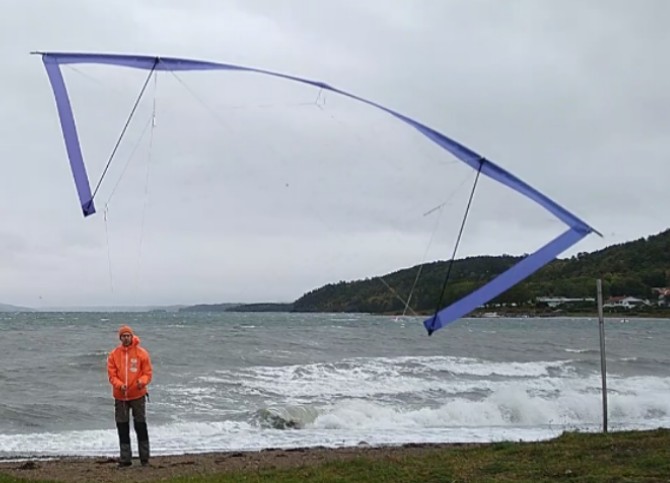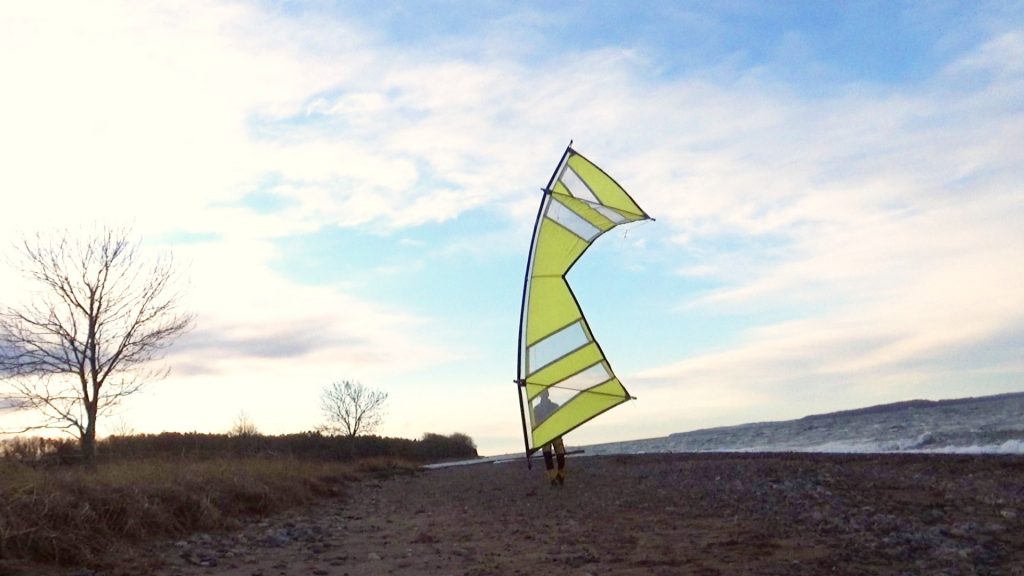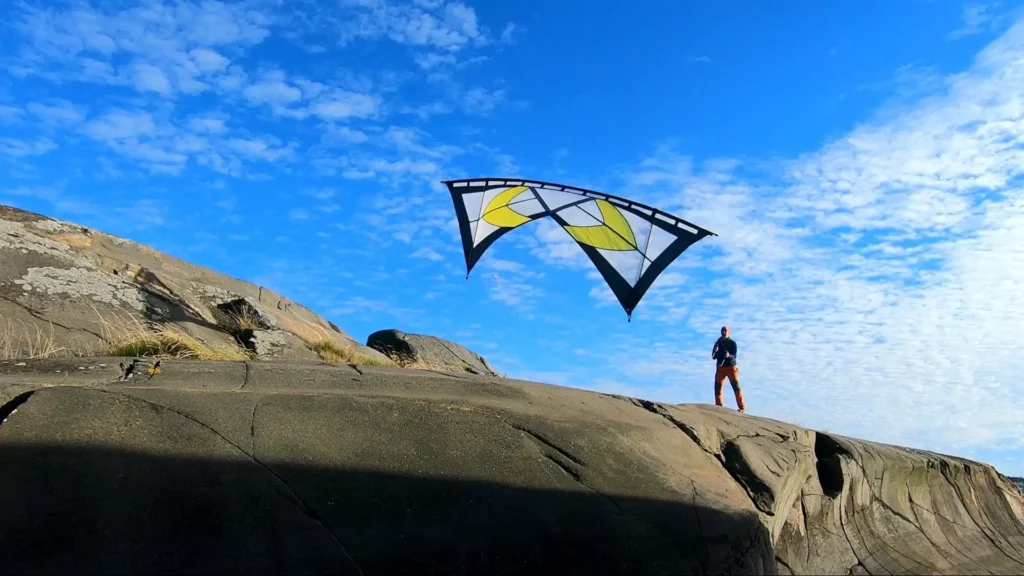Now that’s a good question, especially now when we’re in the windy season – at least here up north in my corner of the world.
Introduction
In low or low-medium winds, you basically don’t have to worry about vented quad kites at all, but as soon as the wind picks up, vented kites surely are coming in handy. And you have many variations to choose between. From nearly no venting at all to something like this…

It’s a kite I made for those REALLY windy days and it’s inspired by the Xanadu. Yes, you might call it just a weird experiment, but it does fly – pretty well all things considered – when the wind goes ballistic!
But the Minimalistic is – like said – a kind of extreme experiment and to be honest, it actually has no ventilation, no meshed panels! So let’s leave it as the curiosity it really is and take a closer look at the really vented kites.
Vented kites
When the winds were forecasted to come in between 7 and 11 meters per second (15,5 – 24,5mph) so there was a need for a kite with meshed panels: ventilation. But what would be the best choice between my different ventilated quad kites?
In such conditions, I have at least three kites in my kite bag that could be up to the task, the Yellow Double Vented, The Green Triple Vented and the A-Quad Hardcore. All kites could be a good choice but which one to select?
In this post, I’ll quickly go through four factors that can determine which kite to pull out of your kite bag and give you the most fun in difficult wind conditions!
#1 How much ventilation?
The more mesh panels (ventilation) the more wind is let through the kite. And more ventilation also means less lift, the kite will need more wind to fly. The stronger the wind the more ventilation you will be looking for. A less-ventilated kite might end up blown into shreds in strong and bumpy winds as a too much-ventilated one will not fly at all. So far this is kind of obvious, right? But there are more aspects to consider when selecting the best kite for the conditions.
#2 Fluctuations in wind speed – gusts
There’s a big difference in flying in a strong but smooth wind compared to a bumpy one. When the wind speed starts to fluctuate flying is more difficult. You will have to compensate for these fluctuations and stable flight will become more demanding.
However, a vented kite will take some of the wind’s bumpyness (nice word, right?!) away, but as always there will be a compromise. A lot of ventilation will take more of the bumpy wind away but the kite will also need more wind to fly. What if the wind drops too low for the kite to fly? Yeah, it’s a compromise!
#3 Body language
You know when flying in a nice and smooth onshore breeze, you can get away with it by staying stationary on the ground. But when the wind picks up and becomes choppy, you will have to move about on the ground to compensate for the fluctuations in the wind speed. You might have to move backwards when the wind drops or forwards if it picks up. And if the gusts are strong you cannot always get away with just walking. No, you’ll have to run.
I will also make a point of never flying with your arms fully stretched out in front of you. Nor pulling your hands very close to your body. If you do, you’re physically not able to ‘do the ‘kill’ the smaller gusts with your arms. But if you keep your elbow joints at about 90 degrees and your elbows at your body you can give by pushing your hands away from your body or pulling them closer whatever is required.
#4 Length of your flying lines
Your line length also has an impact in all sorts of wind conditions. Also when the wind becomes choppy.
When flying on longer lines the line length itself will act as a form of suspension for the kite. Depending on several parameters, like the amount of venting in your kite, the general wind, the gusts, your flying style and body language and so on, the longer lines will tend to sag somewhat. That sagging will in a way suspend the kite in (really) bumpy wind.
Experiment with different line lengths to get a feeling for how these mechanisms work, and with experience you will start to understand and find the right line set length for your flying conditions.
—
If you have these things in mind when you go flying in difficult wind conditions, I’m pretty sure you’ll squeeze more quality flying out of your time on the flying field. Experiment and get a feel for different parameter combinations and set-ups and you’re gonna have more fun while becoming a better pilot! Two for the price of one!






